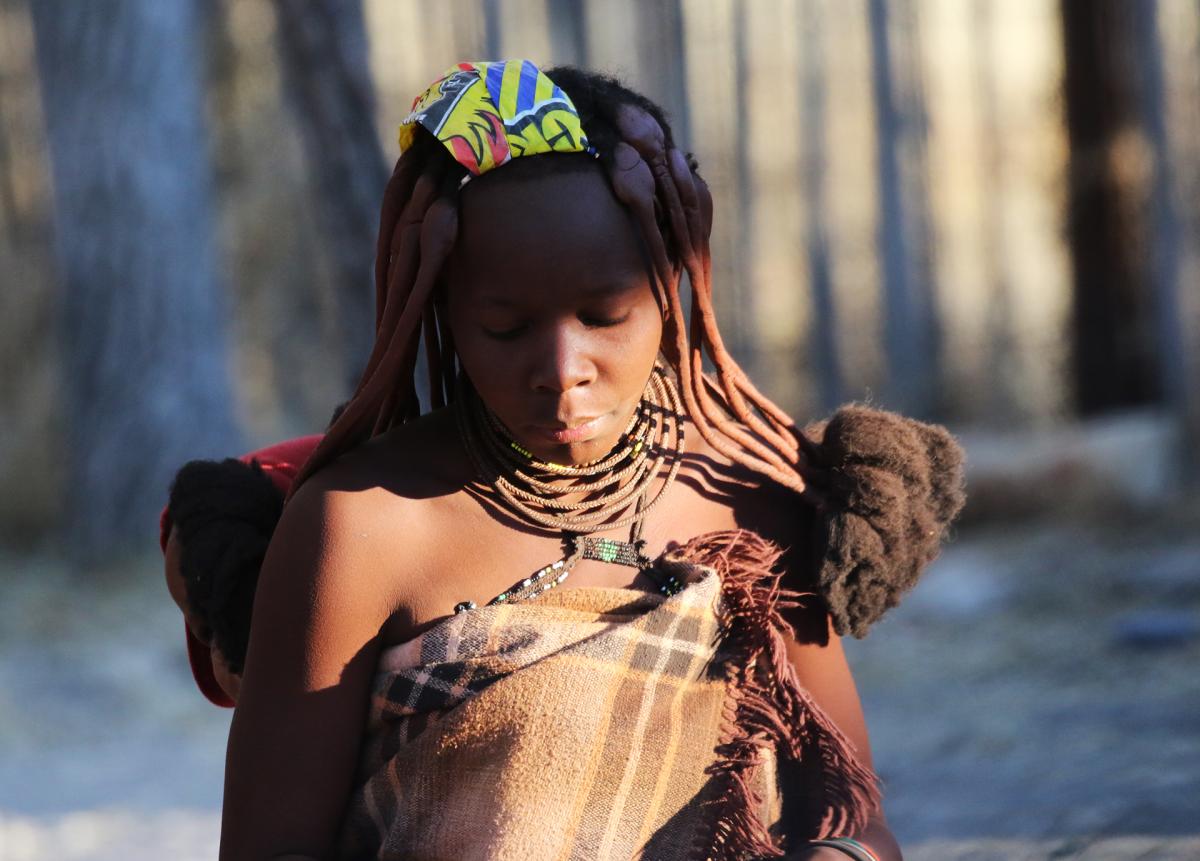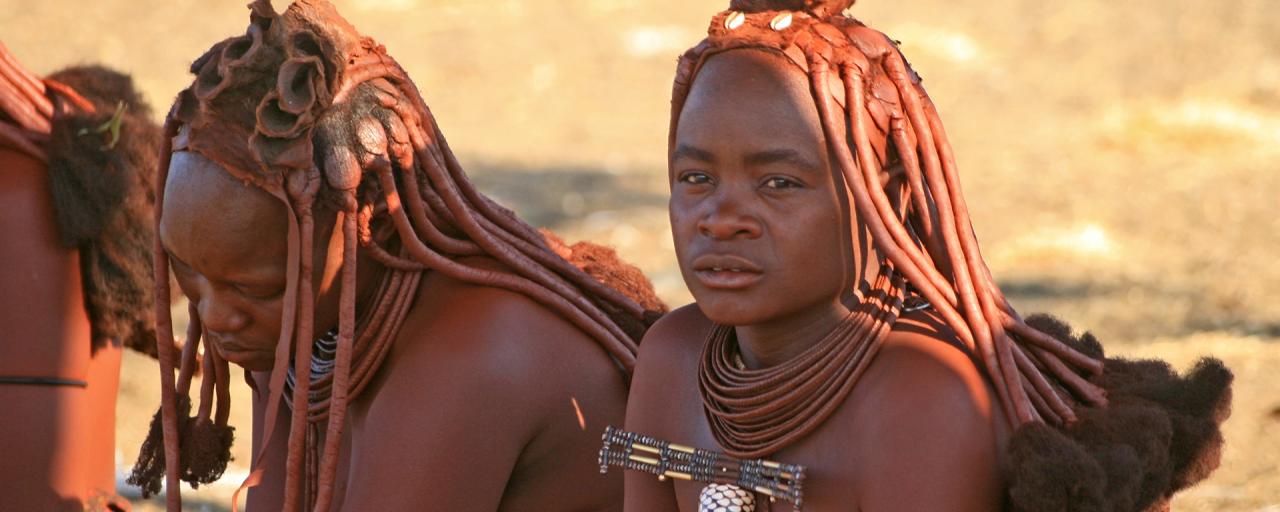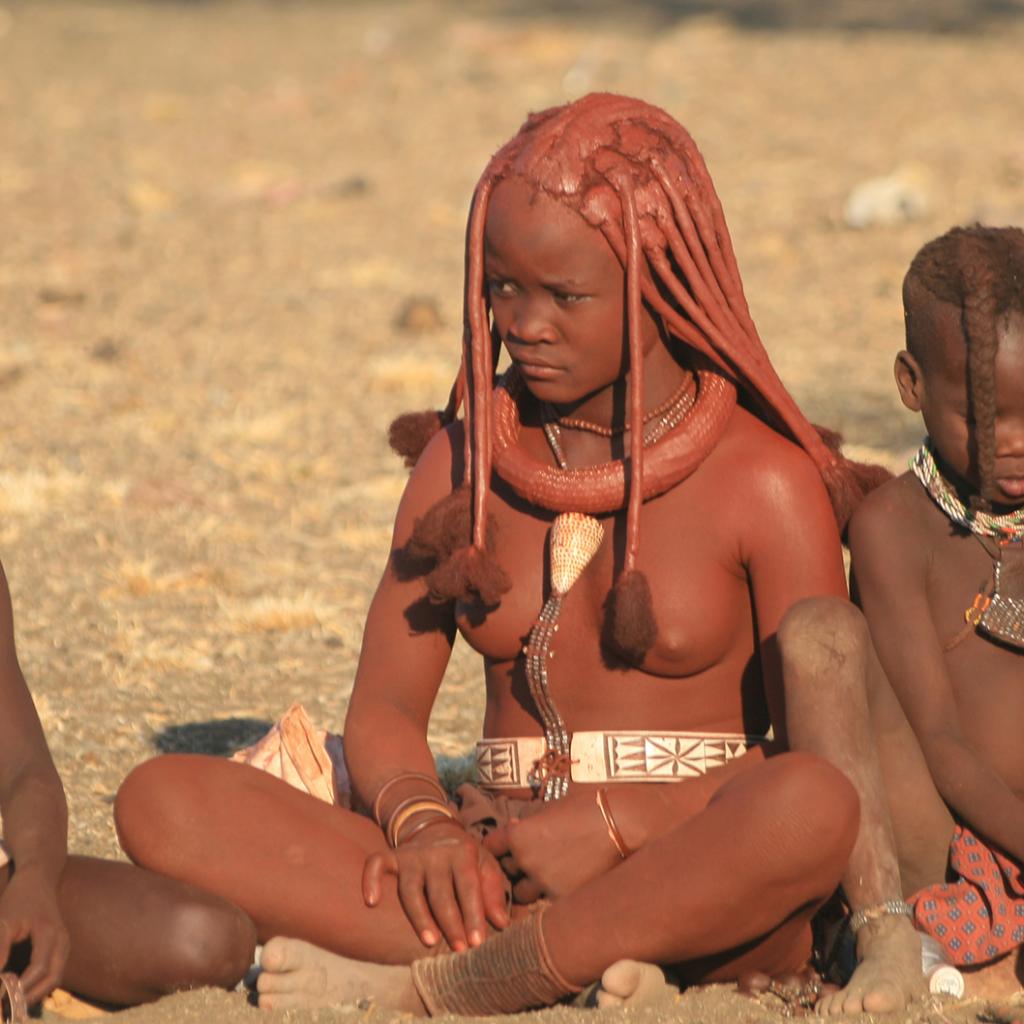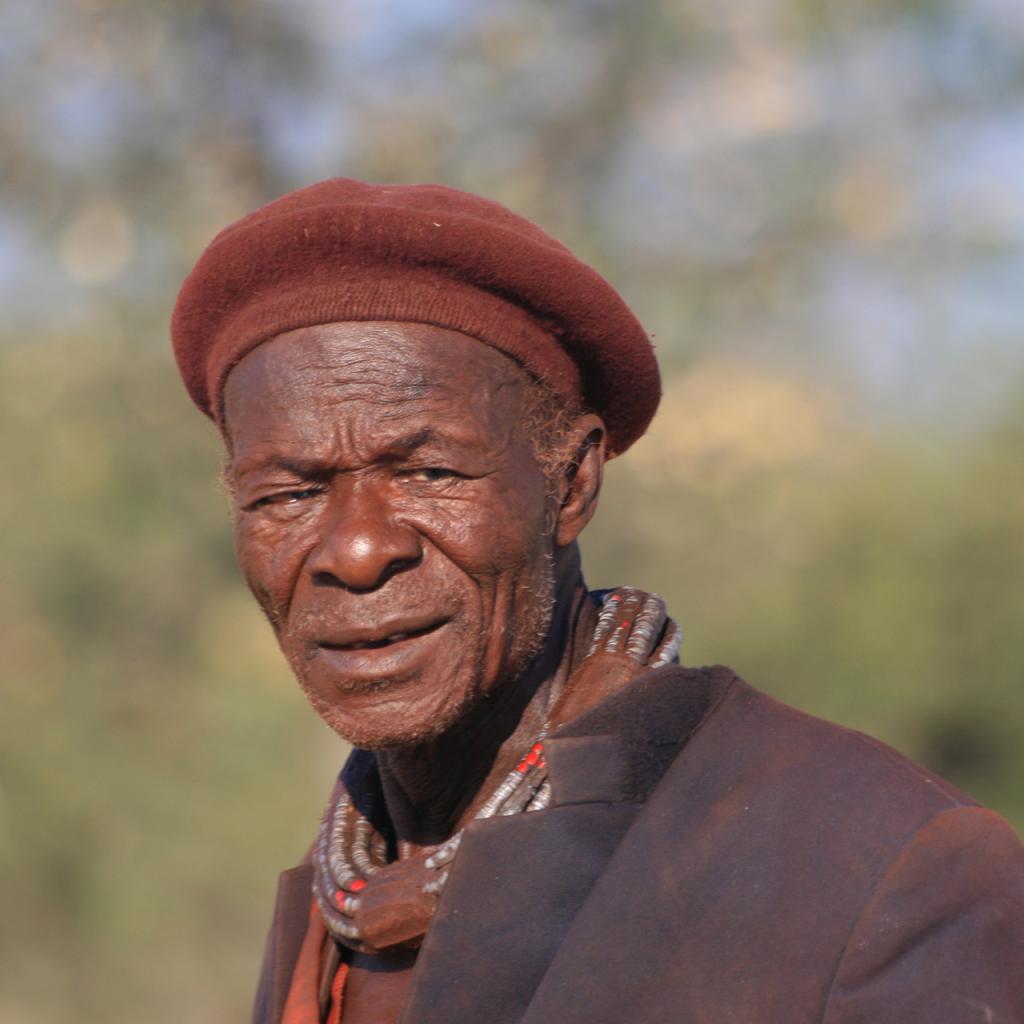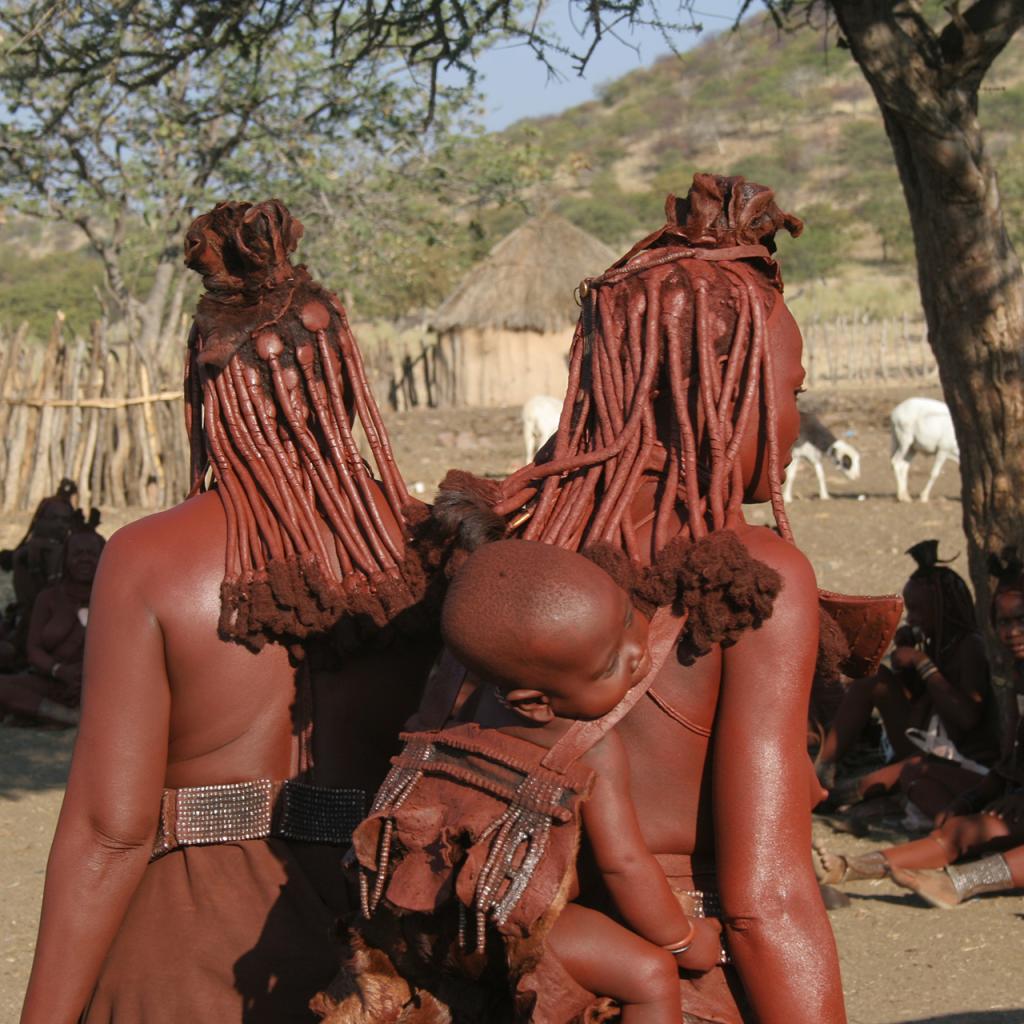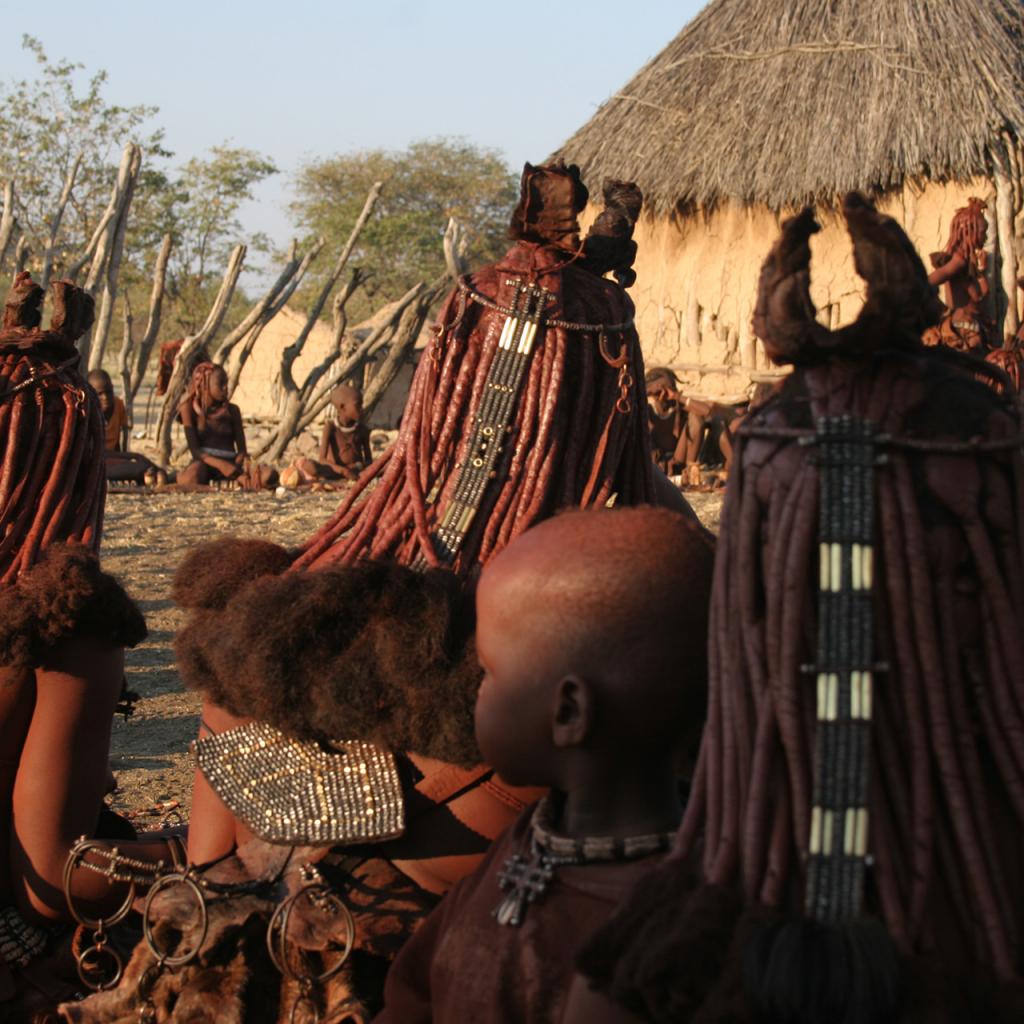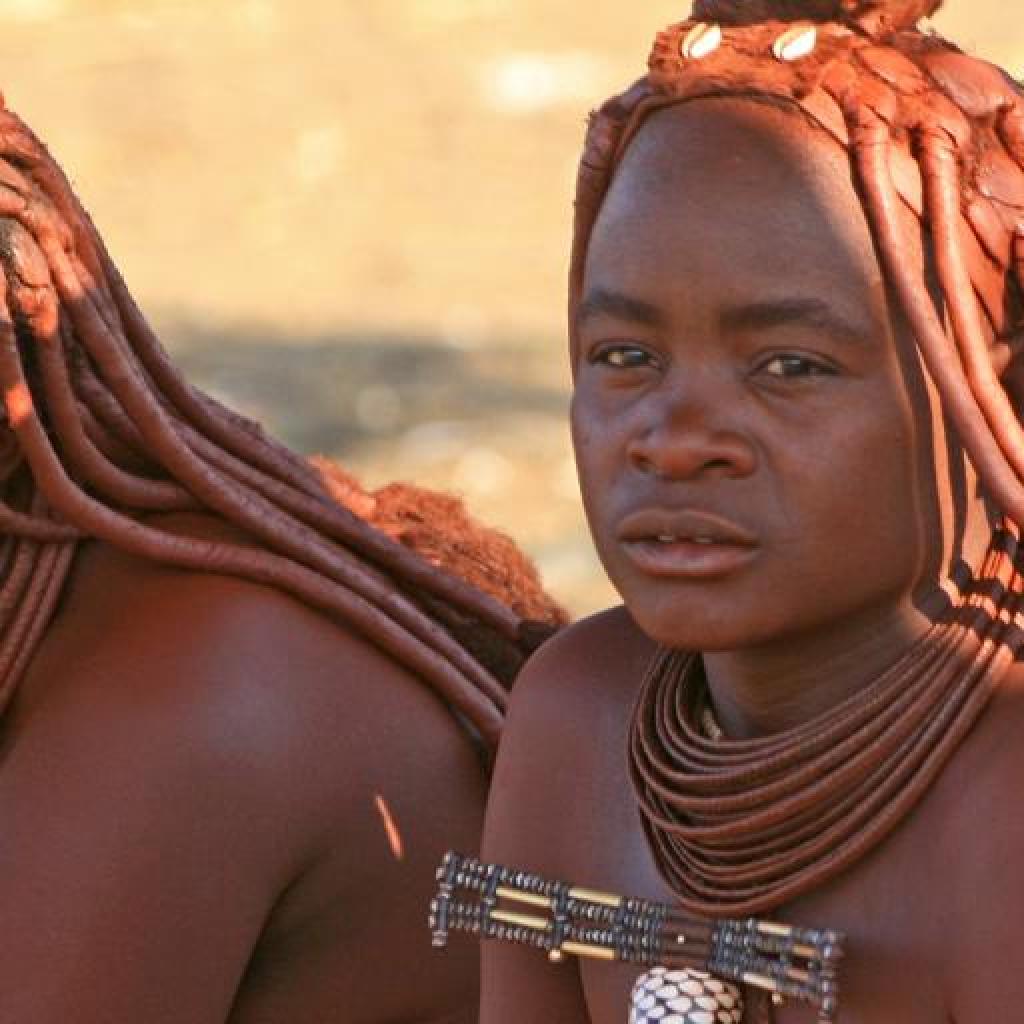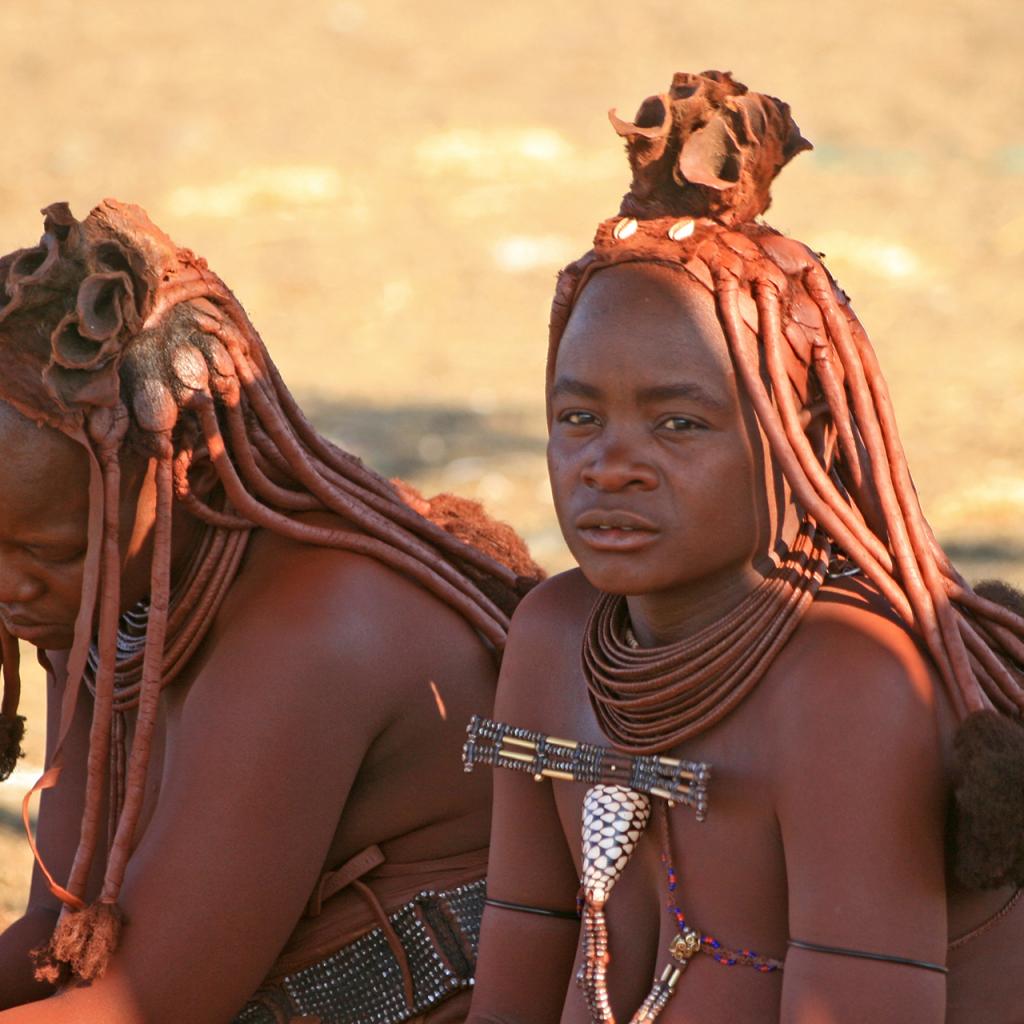The marvellous Himba women have an appearance similar to that of timeless clay statues. They usually cover their body and hair in a mixture of butter and red soil, and as a result they look like dolls.
They wear traditional garments and accessories made from animal hide, and also put rusty iron rings on their fingers.
They live according to tradition and refuse modernity and Western culture.
This makes the Himba population one of the most interesting to discover and Himba women are amongst the most photographed of Africa.
Northern Namibia, specifically the dry region of Kaokoland, is the living area of one of the populations most beloved by photographers and by those who are in search of ethnical minorities who still live in accordance with traditions that have not changed over the course of millennia.
This region is considered one of the wildest and most inhospitable areas of Southern Africa. Its virtual borders are the vast plain of Etosha to the South, the boundless rainforests of North Angola to the North and the Namib desert to the West. This is where you can encounter the Himba people.
The Namib desert, whose name means “shield”, played a double role through the centuries. On one hand, it protected the natives from Portuguese colonizers, on the other it has always represented a challenge to survival because of its dangerousness and drought.
The Himba are semi-nomadic shepherds belonging to the Bantu strain. They are also the descendants of the Herrero people, with whom they share the language. However, they developed different traditions, as a consequence of the different historical path they followed compared to their ancestors.
The Himba, as a matter of fact, at a certain point in their history, migrated to the close-by land of Angola, where they came into contact with the San people, and adopted their culture and traditions.
When they returned to Namibia they retained the San customs. Little is left in common with the Herrero apart from the language. It is hard to believe they once belonged to the same group.
The Himba still live according to tribal traditions, refusing modernity progress and Western lifestyle. They live in villages with huts made from mud and their social organization is quite primitive.
Inside the villages there is always an enclosure for animals. The Himba have a very strong bond with their cattle. They see it as a source of life and wealth, and it influences their religious beliefs, too.
Women have a fundamental role in the Himba society. Their appearance is what really characterizes them, especially in the eyes of visitors.
Not only do they have the typical Bantu statuesque frame, they are also used to the practice of covering themselves in a cream made of butter and red/orange soil, that is the colour of the soil where they live. The same mixture is used to style their hair as well. This is done as a sort of dreadlocks once again covered in red soil. They complete their outfit with traditional animal-hide clothes.
It is sometimes possible to see these women in urban centres, where they go to sell some of their artwork.
Life, tradition and culture of Himba people
- Himba clothing and accessories
- Himba rituals of birth and death
- Himba history
- Himba people social organisation and religious beliefs
